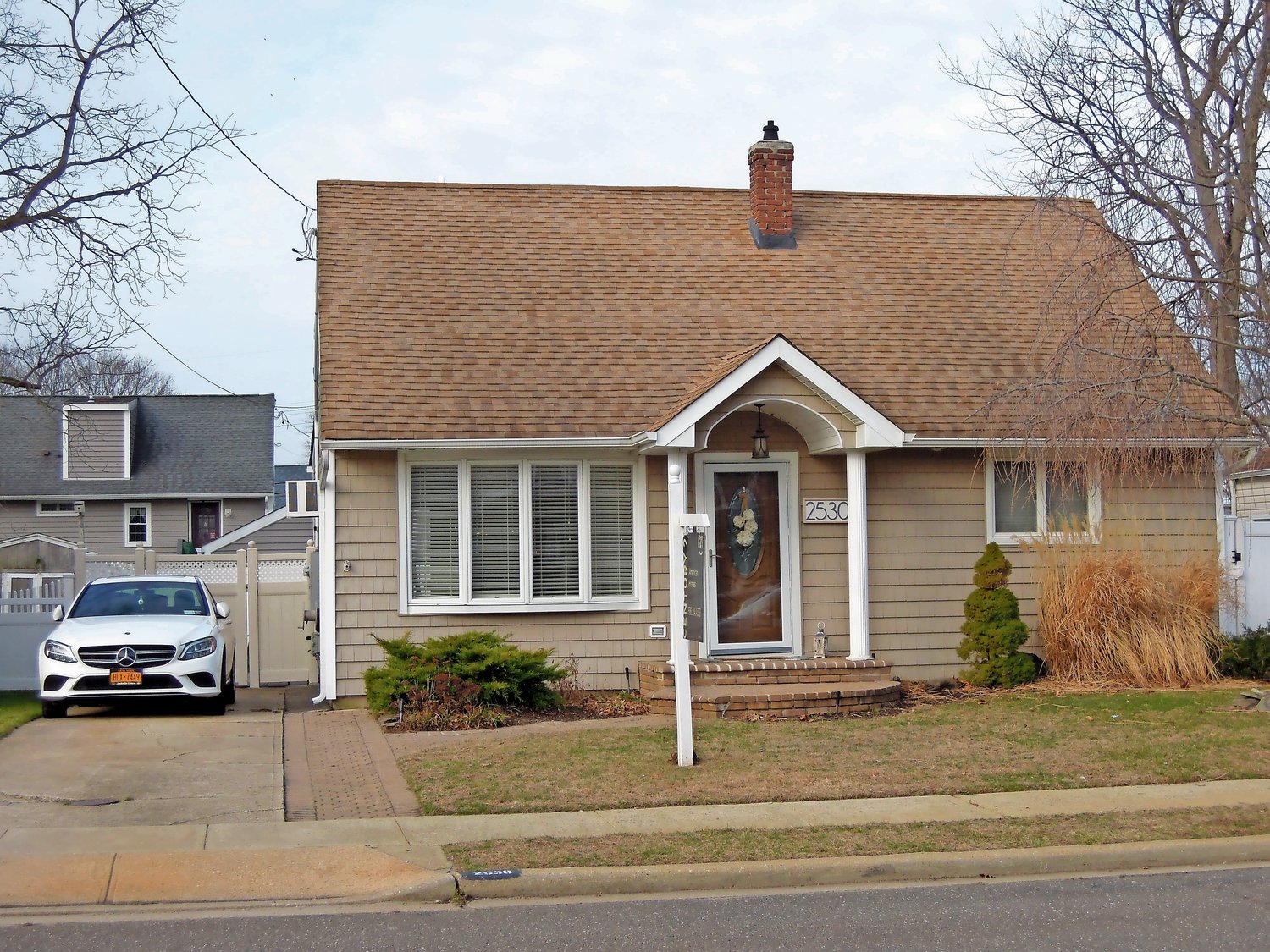Housing market is hot, but many are left behind
With the job market growing, real estate prices continuing to rise and state lawmakers taking aim at school taxes, Seaford and Wantagh residents should be happy. Yet rising home values also translate to higher assessments — and the jobs being created are not necessarily in the high-paying sectors that Nassau County needs to sustain the standard of living residents have come to expect.
Make no mistake, the housing market is robust. “I showed one house 27 times in the past two days and have appointments for another 17 showings by Saturday,” Laura Dupkin Memisha, of Wantagh-based Realty Advisors, said last week. “They’ll probably get at least seven offers. The owners said they only wanted to show for another three days, and then they’d decide.”
January is often a relatively slow month in the housing market, yet January listings in Seaford were up 17.5 percent from a year ago, despite an average sale price of $587,000, according to Redfin, which provides data on real estate. That’s almost $140,000 more than the median home value for the hamlet listed on Data USA, which is pegged to the U.S. census.
Wantagh showed a 13.6 percent year-over-year increase in listings, and average prices were about $70,000 more than the hamlet’s $479,000 median home value. With a larger population, Wantagh also had more properties listed, according to Redfin.
“It’s not correct to say it’s a seller’s market,” Dupkin Memisha said. “But for a house that is properly priced, taking into account taxes and all the details, you could maybe say it was a seller’s market.” And homebuyers are definite in their searches. Multigenerational families are common in both Seaford and Wantagh, and many buyers only want specific towns or schools districts. “I get many buyers who only want homes in [Wantagh],” Dupkin Memisha said. “They’re not interested in looking anywhere else.” The same was true for families seeking homes in Seaford or Levittown. “Their parents live there. Their grandparents lived there,” Dupkin Memisha added. “They want to be near their families.”
She cautioned, however, that “these houses are not what I’d call ‘affordable.’ All my buyers are at least two-income families.”
Although first-time buyers are permitted by law to pay down payments of as little as 3.5 percent, “I haven’t seen that for a long time,” Dupkin Memisha said. Instead, they typically put between 20 percent and 30 percent down. “And you have to add $20,000 to $25,000 in closing costs on top of that,” she added. In other words, to move in to a Seaford house selling for $587,000, buyers have to come up with a minimum of roughly $140,000 in cash.
Interest rates are going up, but 30-year, fixed-term mortgages are still available at between 3.07 and 3.09 percent.
Still, “couples save and sacrifice to be able to come up with the cash,” Dupkin Memisha said. “Maybe they don’t have a big wedding, and they put that money toward a house; or they work two or three jobs” to be able to accumulate the cash. “And sometimes their families help them.”
According to the New York State Department of Labor, Nassau and Suffolk countries added 7,600 new private-sector jobs in December, but many of them are in lower-paying, service-sector jobs. A survey of local employment agencies showed that only 20 percent of newly listed positions paid more than $50,000 per year. The majority — more than 60 percent — paid less than $40,000. With Nassau’s high cost of living and high taxes, $40,000 is a near-poverty-level job for a single earner.
Even in the health care sector — Nassau’s largest employment market — jobs are often part-time, and wages can range as low as $14 an hour.
The rental squeeze
Using the standard mortgage banker’s reference that the cost of housing should equal no more than 30 percent of a household’s before-tax income, a person earning $40,000 per year would only be able to afford a rent of about $1,200.
In that price range, a rental is more likely to be a room, a garage conversion or a house with roommates, according to comparisons of rental services such as Craigslist and Homefinders. The median rent for a one-bedroom apartment on the South Shore is more than $1,700.
Former Herald-Citizen reporter Alexandra Dieckmann and her husband, Danny, were caught in just such a rental crunch. The couple, both 24, moved to Long Island after Alexandra graduated from Liberty University, in Virginia, with a degree in journalism in December 2017. They found a basement apartment in the East Meadow home of a family friend for less than $1,000 per month, and after a brief initial stint at the Herald, Alexandra went to work for Fox News for several months before rejoining the Herald in August 2018 to report on Seaford and Wantagh. But when their friend informed them last June that they would have to vacate their basement apartment by the end of August, they could find nothing their modest budget could accommodate within an hour’s commute of the Herald’s Garden City office.
“We looked everywhere, and our friends were really generous about extending the date when we had to move,” Dieckmann said. In the end, though, the couple decided that the best bet for their future was to leave Long Island. They now live near relatives in Kentucky, a short commute from Cincinnati.
“We pay about $700 rent for a place that is so much bigger than what we had in New York,” Danny said. “Our jobs pay a little better — but the cost of living is lower, so it works out to about 50 percent more” in purchasing power, he said. Danny works in IT, and Alexandra is now a flight attendant for a regional airline.
The Dieckmanns were squeezed by two factors. First, as recent graduates, their jobs were at or near entry level in their respective professions. And they had a total of about $30,000 in student loans to contend with — about half the national average of $32,000 per graduate, according to ValuePenguin. The payments were still enough to strain a budget that was already stretched.
“We had a lot of weeks where we had to plan our food pretty carefully,” Dieckmann recalled.
All these factors have led a majority of millennials to conclude that their best option is to leave Long Island within the next five years, according to a number of news reports.
“I’ve been hearing that statistic for as long as I’ve been in the real estate business, said broker Tony Smith, of SAS Realty in Wantagh. “But people — including young people — keep moving here.” The proximity to New York City, and the hope of higher-paying jobs, continues to lure newcomers, and to persuade natives to stay, he said.
Millennials aren’t the only ones being squeezed. Older adults can fall victim to high property taxes as the value of their homes increases, Seaford Democratic State Sen. John Brooks said. “They might have bought their homes 50 years ago for $8,000 — now those same homes could be assessed at $600,000 or $700,000,” Brooks said. Since many seniors are on fixed incomes, they can be faced with the choice of downsizing or leaving the area altogether.
And the cap on the amount of state and local taxes that can be deducted from federal income taxes has hit many middle-income earners hard as well. U.S. Rep. Peter King, a Republican from Seaford, and Rep. Tom Suozzi, a Democrat from Glen Cove have teamed up to try to roll back the cap that was part of President Trump’s signature 2017 tax package. Long Island Democrats in the State Legislature have joined forces to consider possible ways of offsetting the cap as well.
As taxpayers begin filing their 2019 returns, though, the cap remains firmly in place.

 47.0°,
Mostly Cloudy
47.0°,
Mostly Cloudy 








